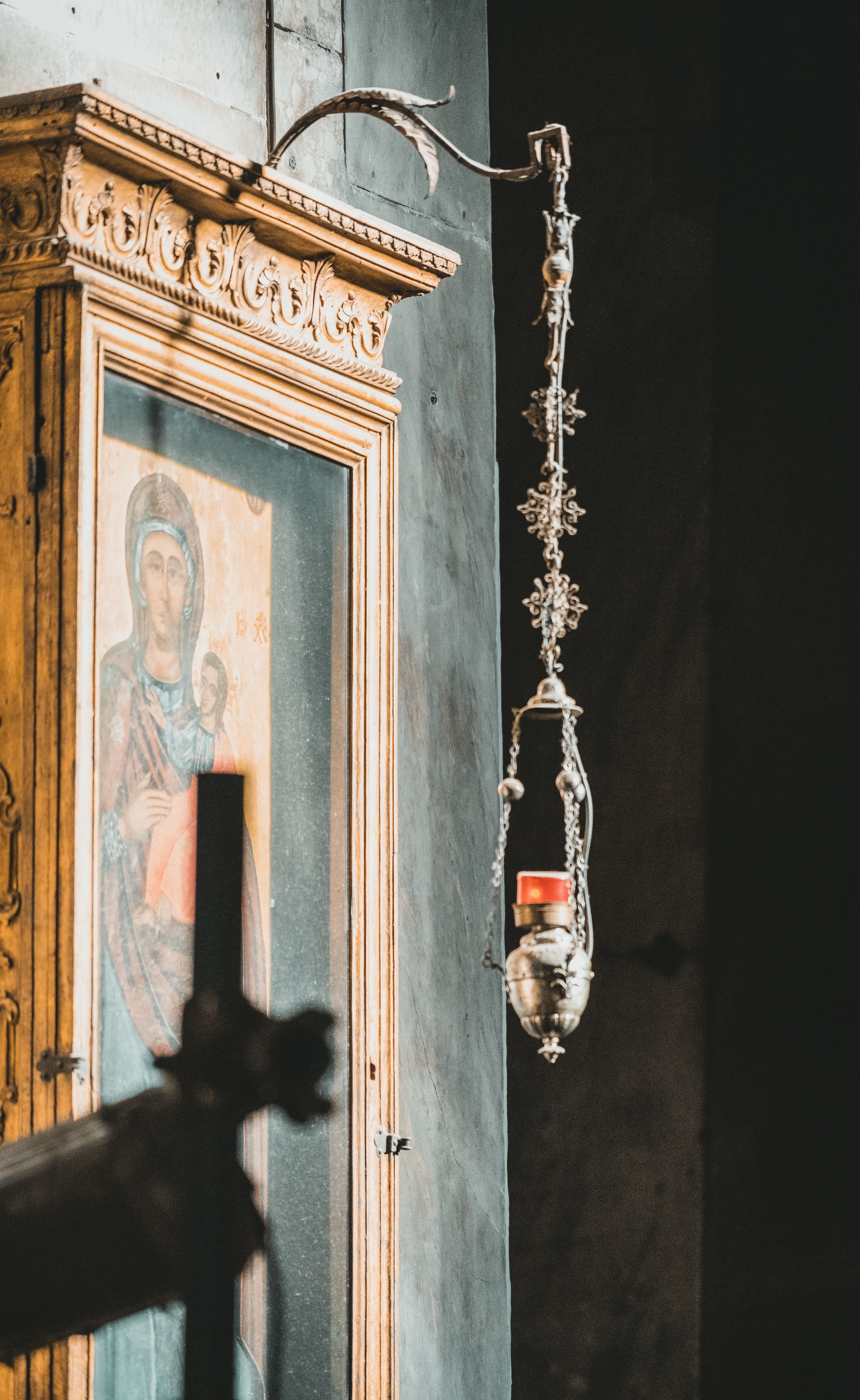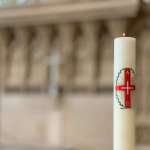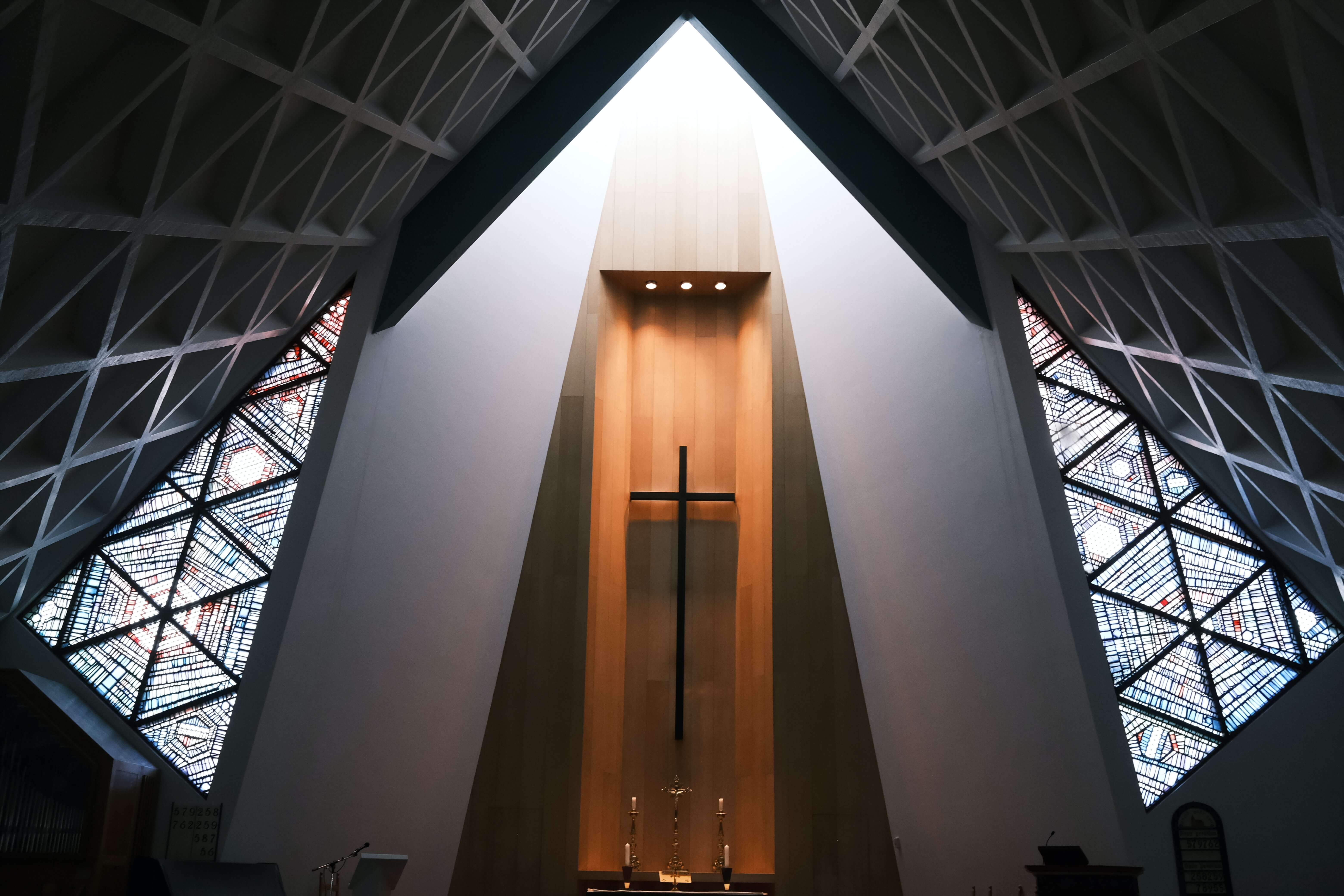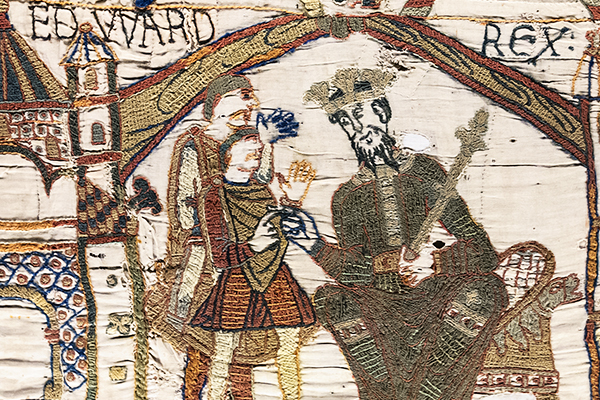
By Kimberly Bruce
The millions of tourists who visit Westminster Abbey in London to view the tombs of Queen Elizabeth I and her martyred Catholic cousin, Mary Queen of Scots, may not realize that the only English monarch to be canonized is buried in the heart of the Abbey he built: St. Edward the Confessor (feast day: 13 October).
Canonized a century after his death, St. Edward earned his title “confessor” for his piety and devout character, as one who “confessed” Jesus Christ as Lord of Lords and King of Kings. Reports of miraculous healings by the touch of his royal hands included restoring sight to the blind and curing scrofula, a swelling of the lymph nodes.
Birth and exile
Edward was born in 1003 to his mother, Emma, and Ethelred II “the Unready,” who was King of England from 978-1013 and again from 1014-1016, having had his reign usurped by the King of Denmark in between. Edward, barely ten, was sent into exile in Normandy with his brother, Alfred, to be raised by an uncle because of the Danish takeover. Edward’s youth was filled with assisting at Catholic Mass and associating with those in religious life.
When he was nearly 40, Edward assumed the crown in 1042 following the death of his stepbrother, King Hardicanute, the son of his mother and her second husband, King Canute. Edward vowed that if he was able to return safely to England from exile, he would visit St. Peter’s tomb in Rome.
Having also made a vow to remain chaste but pressured to marry, King Edward chose a celibate marriage with Edith, the daughter of the Saxon earl, Godwin of Wessex.
Building the Abbey
King Edward’s subjects appreciated him for alleviating some unnecessary hardships, namely unjust taxation. Known to be good, gentle, and godly, King Edward read Holy Scripture, prayed the Divine Office with the monks, and undertook penances for his sins.
Because King Edward did not want to put his kingdom at risk of attack by venturing too far from home, Pope Benedict IX told him that he could, in lieu of making a pilgrimage to St. Peter’s tomb in Rome, build an abbey dedicated to St. Peter instead. Westminster Abbey was consecrated in December 1065, just days before St. Edward’s death, and it was amongst the greatest of all churches in Europe.
Since 1066, coronations and important dignitary occasions have been held at Westminster Abbey. Today an Anglican Church, Westminster Abbey was for centuries, from its very beginning, a Benedictine monastery until King Henry VIII closed the monastery in 1540.
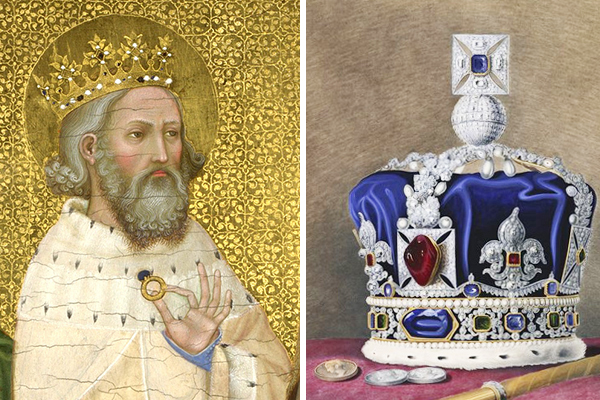
St. Edward’s Sapphire
He died on Jan. 5, 1066, and was buried in his newly consecrated abbey. His feast day falls on 13 October because it was on that day in 1163 that his body was found to be incorrupt when King Henry II had St. Edward’s tomb moved to a more elaborate shrine.
The oldest of England’s renowned Crown Jewels is St. Edward’s Sapphire. This stone was placed in the Imperial State Crown’s top cross in 1838, where it has remained ever since. Legend has it that St. Edward gave this stone to a beggar. The stone was later returned to him by two pilgrims claiming a miraculous encounter with St. John the Evangelist in Syria. Saint John told them he had been the disguised beggar and proceeded to give them the jewel which they, in turn, returned to St. Edward!
Saint Edward loved his Lord and Savior, the God of Mercy, and confessed Him to others, as did St. Faustina, who said:
“Oh, if He were just a king, but He is the King of kings, the Lord of lords. Before Him, all power and dominion tremble” (Diary of Saint Maria Faustina Kowalska, 1810.)
Saint Edward the Confessor, pray for us!



